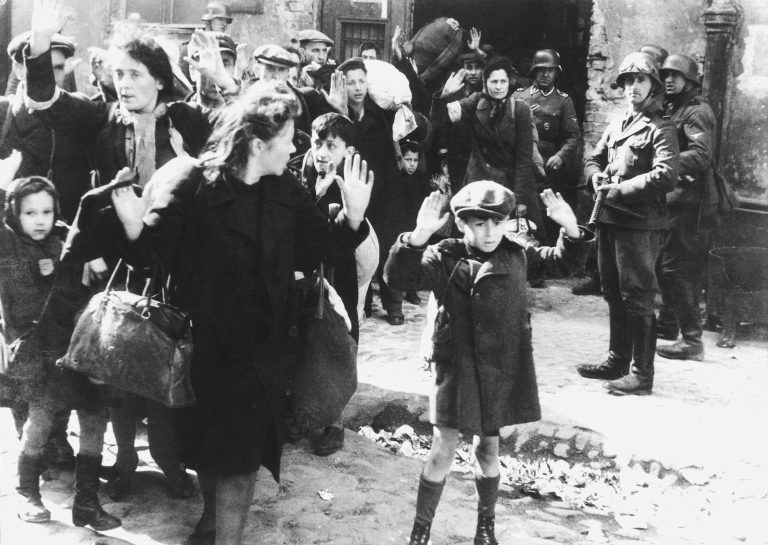
April 19, 1943 – the Uprising began. A quarter of a million Jews had been deported from the ghetto to Treblinka and murdered, the remaining Jews began to build bunkers and smuggle weapons and explosives into the ghetto. The uprising started when the ghetto refused to surrender to the police, who had ordered the destruction of the ghetto, block by block, ending on May 16. A total of 13,000 Jews were killed, about half of them burnt alive or suffocated.
[draft]
New York, N.Y. The Warsaw Ghetto Uprising was the 1943 act of Jewish resistance in the Warsaw Ghetto in German-occupied Poland during World War II to oppose Nazi Germany’s final effort to transport the remaining ghetto population to the gas chambers of the Majdanek and Treblinka extermination camps.

After the Grossaktion Warsaw–the “Great Action”–of summer 1942, in which more than a quarter of a million Jews were deported from the ghetto to Treblinka and murdered, the remaining Jews began to build bunkers and smuggle weapons and explosives into the ghetto.
The left-wing Jewish Combat Organization (ŻOB) and right-wing Jewish Military Union (ŻZW) formed and began to train. A small resistance effort to another roundup in January 1943 was partially successful and spurred Polish resistance groups to support the Jews in earnest.
The uprising started on April 19th when the ghetto refused to surrender to the police commander S.S.-Brigadeführer Jürgen Stroop, who ordered the destruction of the ghetto, block by block, ending on 16 May. A total of 13,000 Jews were killed, about half of them burnt alive or suffocated. Stroop reported 110 German casualties, including 17 killed.
The uprising was the largest single revolt by Jews during World War II.
The Jews knew that victory was impossible and survival unlikely. Marek Edelman, the last surviving ŻOB commander who died in 2009, said their inspiration to fight was “not to allow the Germans alone to pick the time and place of our deaths.” According to the United States Holocaust Memorial Museum, the uprising was “one of the most significant occurrences in the history of the Jewish people.”
Remembering the Warsaw Ghetto Uprising (April 19, 2023)